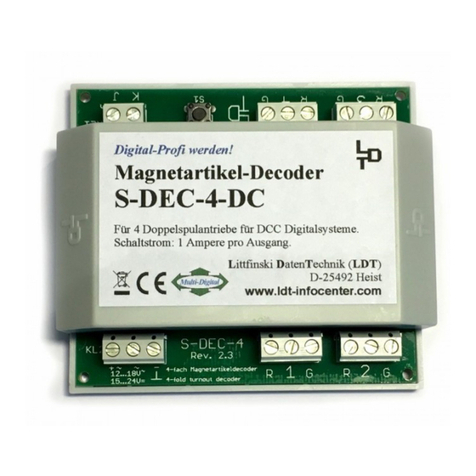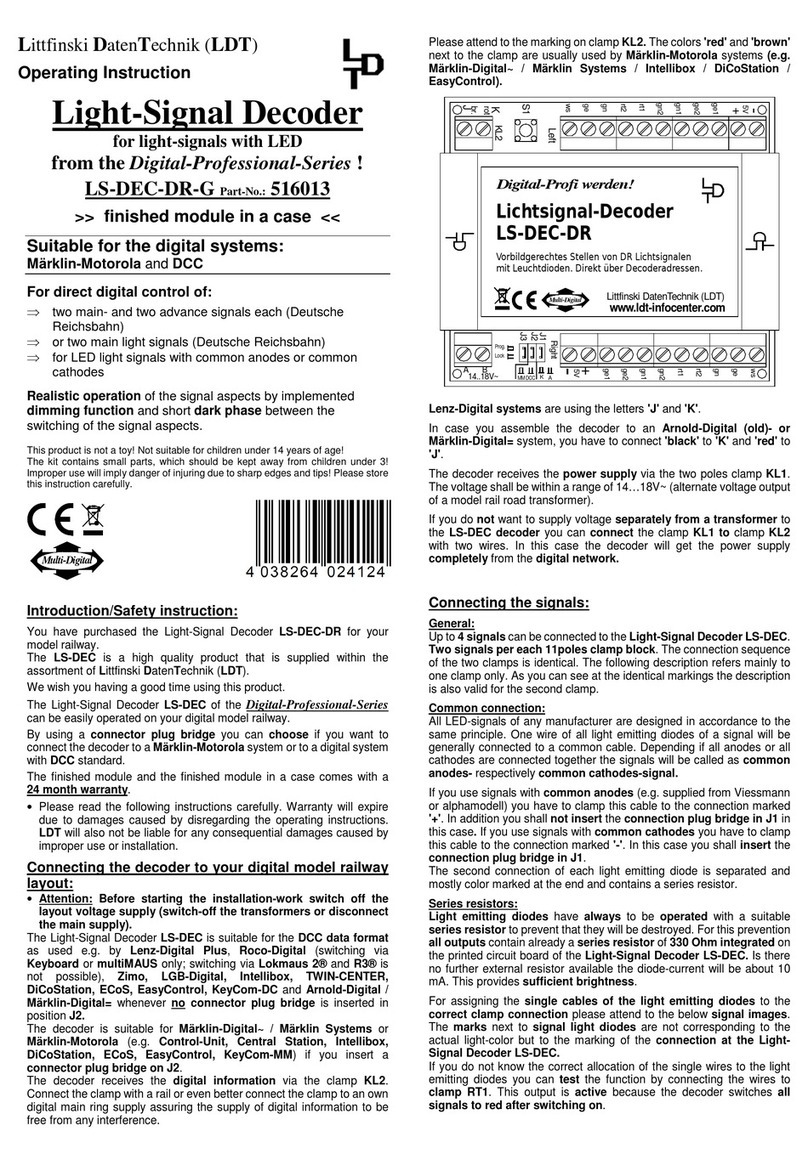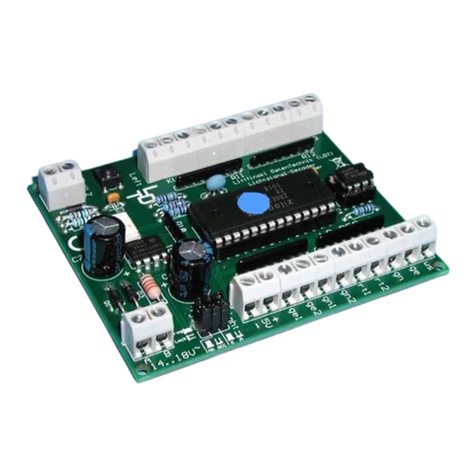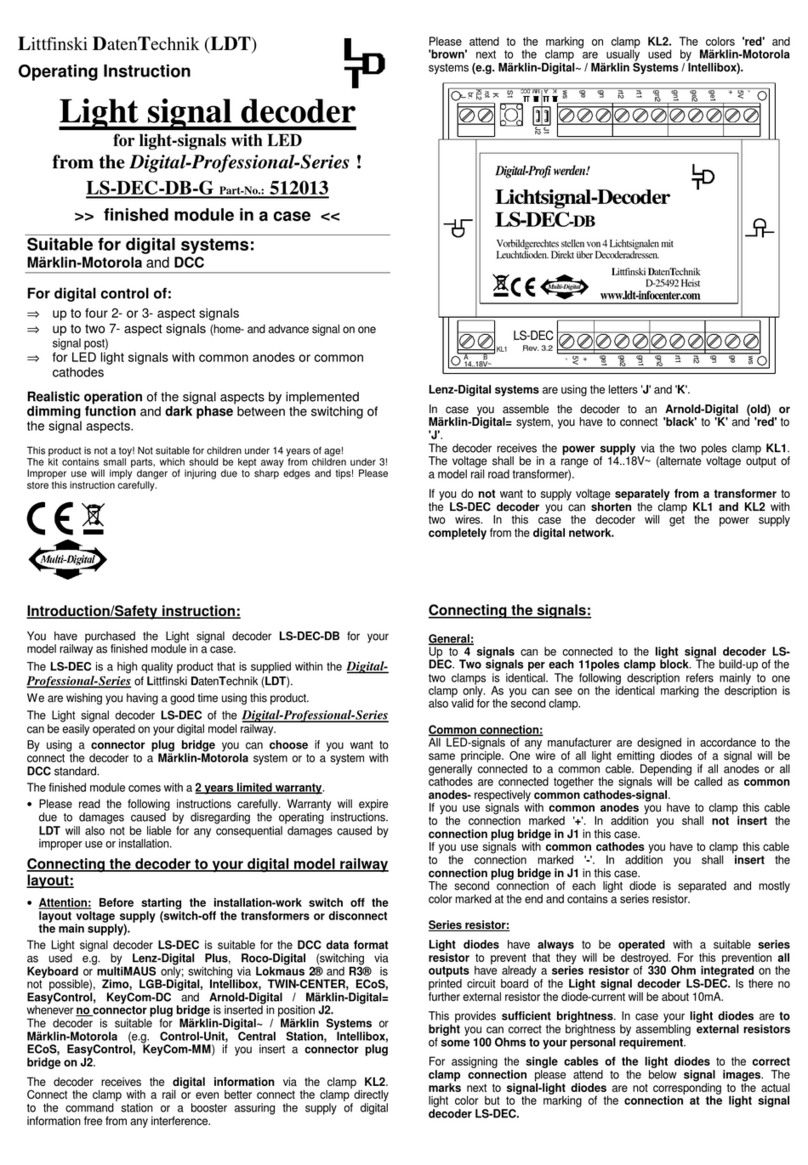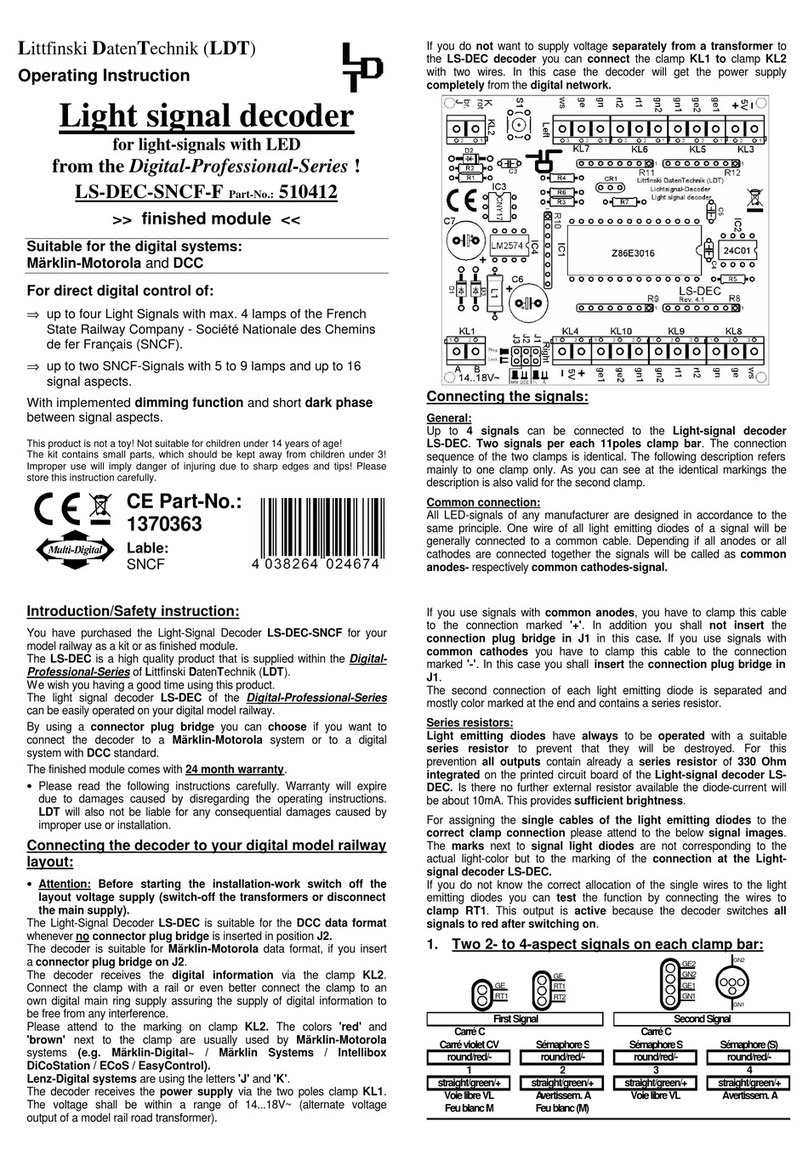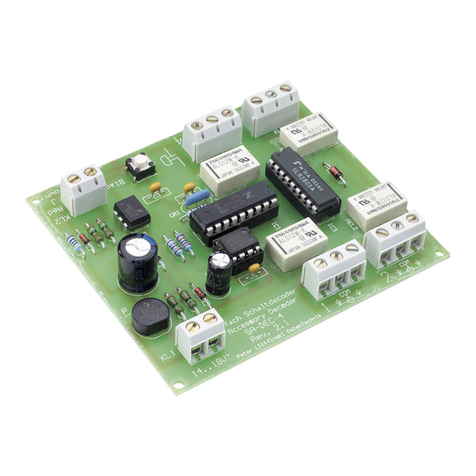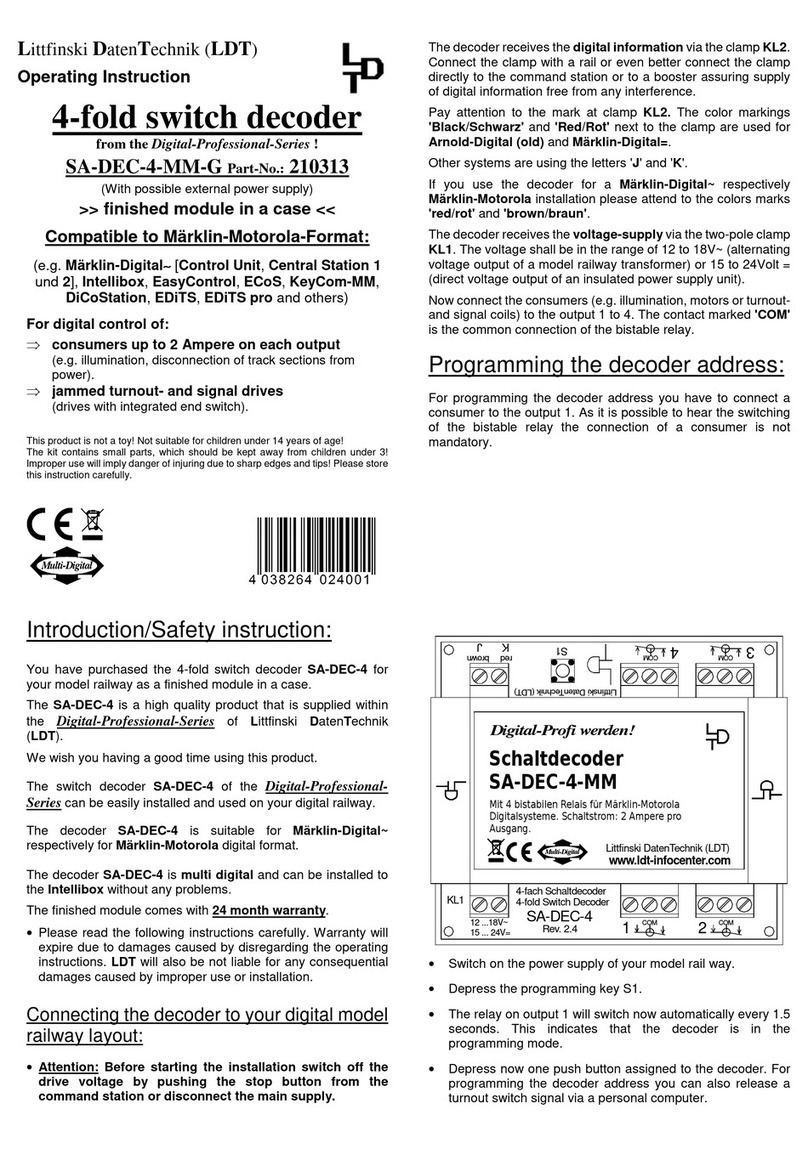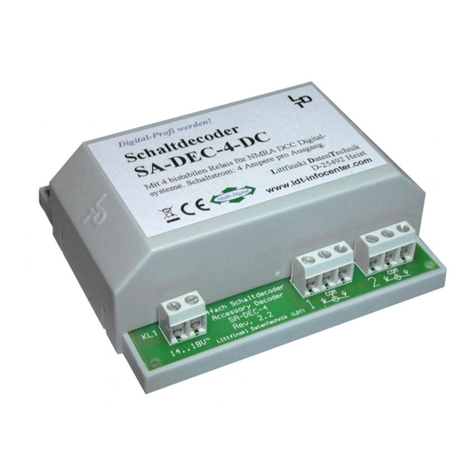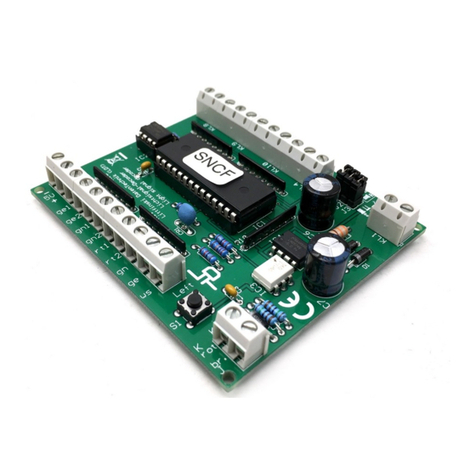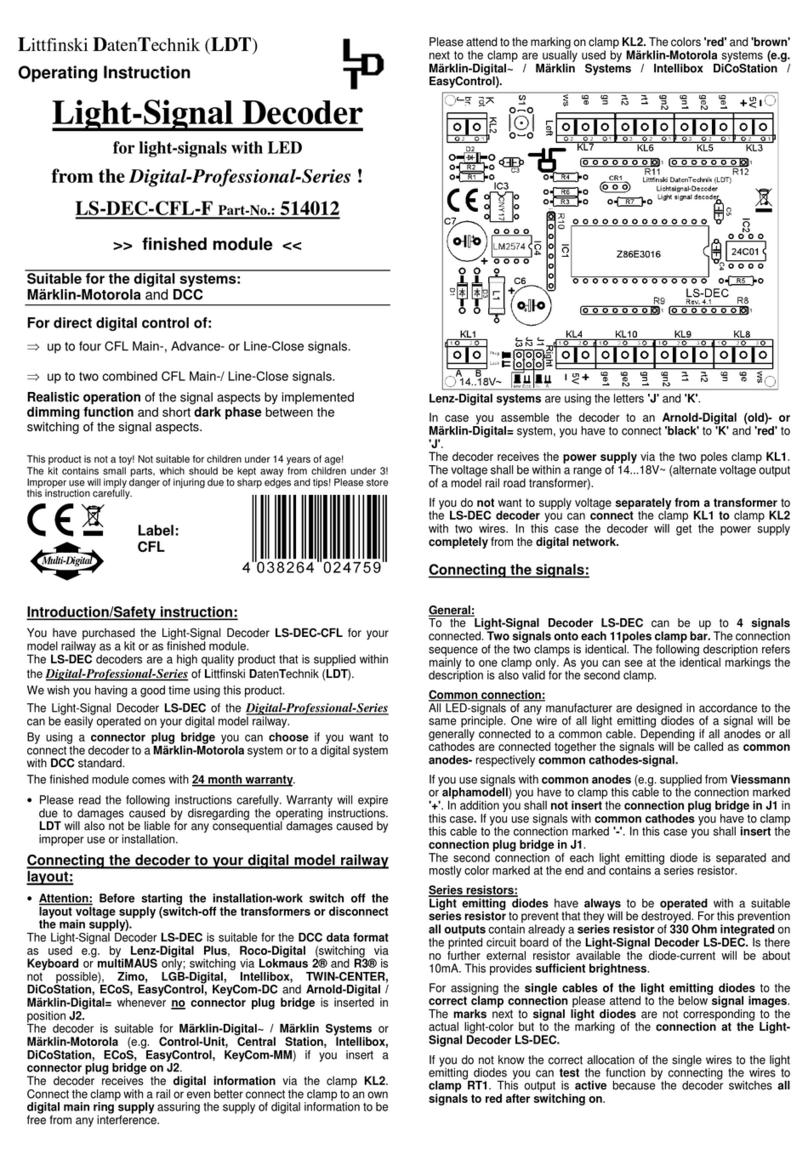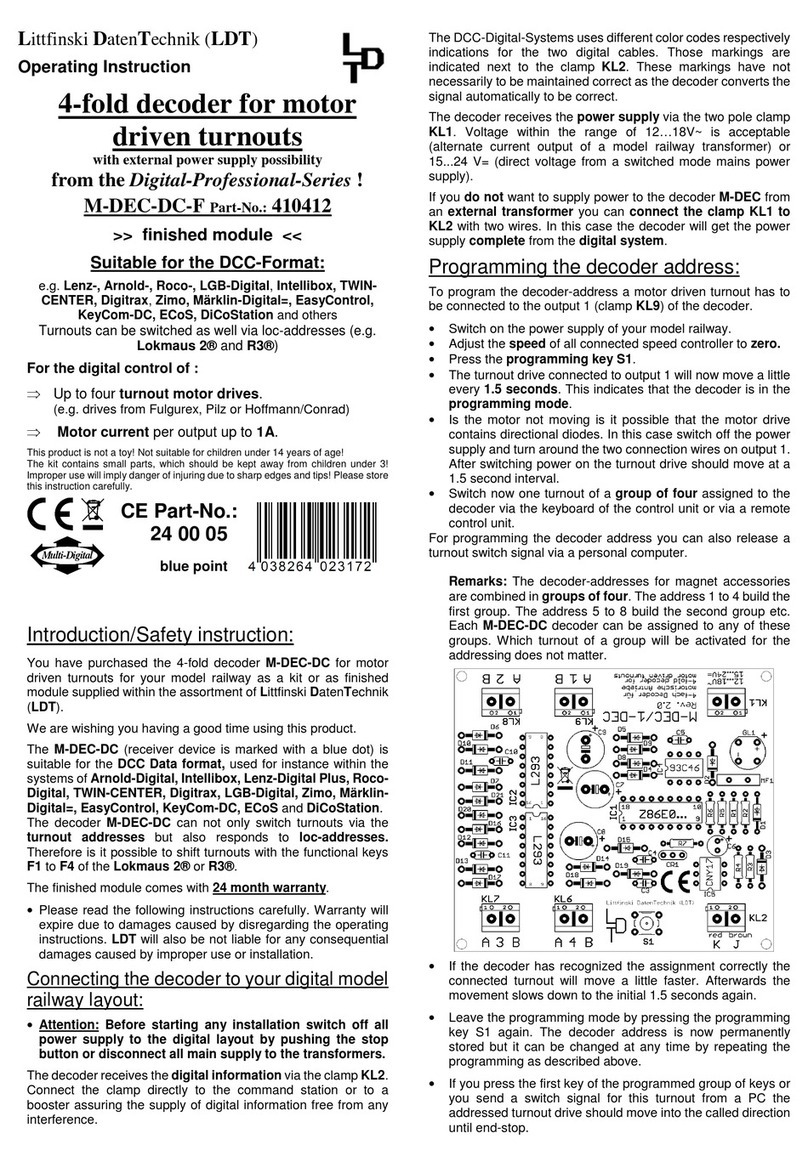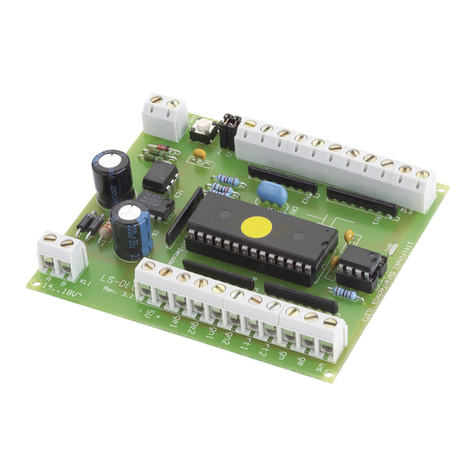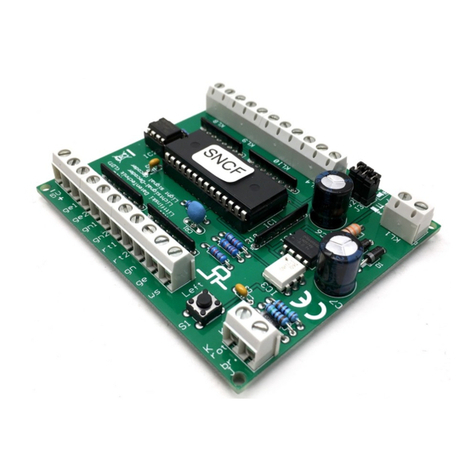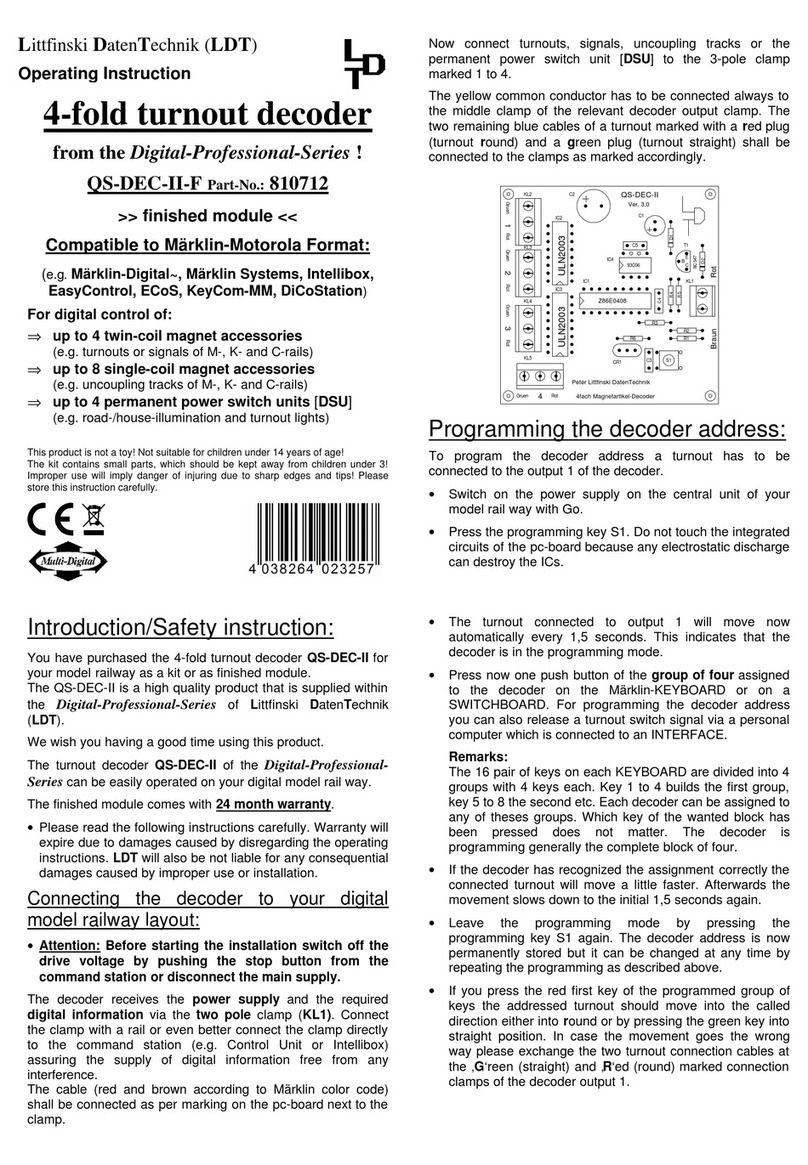
1. Two 2- to 4-aspect signals on each clamp bar:
GN
RT1
GN
RT1
WS
GE
GN
RT2
GN1
GE2
GE1
GN1
GN2
2. One multi-aspect station-entry signal with
advance signal on each clamp bar:
GE
GN
RT1
WS
GE1
GE2
GN1
Entry- with advance signal
Further sample connections are available at the internet on our Web-
Site (www.ldt-infocenter.com) at the section “Sample Connections”.
Additionally you can find detailed information about the Light-Signal
Decoder LS-DEC-CSD at our Web site within the section “Digital-
Compendium”.
Programming the decoder address:
•The jumper J3 has to be inserted for the programming of the
decoder addresses.
•Switch-on the power supply of your model rail way.
•Activate the programming key S1.
•At least two light emitting diodes on a signal connected to the left
clamp block (on this decoder side is the programming key S1) will
be automatically switched over every 1.5 seconds in a flashing
mode. This indicates that the decoder is in the programming mode.
•Press now one key of the fourfold address-group to be assigned
to the left clamp block of the decoder. For programming the decoder
address you can as well release a turnout switch signal via your
model railway software.
Remarks: The decoder addresses for magnet accessories also
to be used for switching the signal-aspects are combined into
groups of four. The address 1 to 4 will be the first group. The
address 5 to 8 will be the second group etc. Each clamp block of a
LS-DEC decoder can be assigned to any of these groups. It does not
matter which of the eight possible keys used for programming will be
activated. The decoder stores always the complete group of keys.
If the Light-Signal Decoder LS-DEC shall control on this clamp bar
two 2 to 4 aspect signals or one multi-aspect entry-signal with
advance-signal this has to be adjusted together with the decoder
address. If you activate within the programming mode one key of the
desired group of fourkeys designated for switching a turnout straight
or a signal to green the decoder will be set for the controlling of two
2- to 4- aspect signals.
If you activate a key for switching a turnout round or a signal to red
you have selected the option to switch one multi-aspect entry-
signal with advance-signal. For both programming modes (left
and right clamp bar)you canindividual select if two 2- to 4-aspect
signals or one multi-aspect entry-signal with advance-signal
shall be digital controlled.
•If the decoder has recognized the assignment correctly the
connected light emitting diode will flash a little faster. Afterwards
the flashing slows down to the initial 1.5 seconds again.
In case the decoder will not recognize the address it could bethat the
two digital information connections (clamp 2) are wrong connected.
For testing this, switch off thepower supply, exchange the connection
on KL2 and start addressing again.
•Press now the programming key S1 again. At least two light
emitting diodes connected to the right clamp block will flash now.
Repeat the programming of this fourfold-address block as
described above.
•Now press the programming key S1 a third time for leaving the
programming mode. All signals will be automatically switched to
STOP.
Signal switching:
The opposite sample connections show how the fourfold address-
group can be set by use of 8 keys of the push button panel for setting
the turnouts or signals. Between each pair of keys are e.g. the addresses
1 to 4. The two keys red and green for each address are assigned to
the turnout position round or straight respectively the corresponding
signal aspect which is indicated above or below key.
The actual address section is related to which fourfold address-group
has been selected during the programming.
If you use a remote control LH100 of Company Lenz Elektronik then
red will be the minus key and green the plus key.
1. Two 2- to 4-aspect signals on each clamp bar:
If you have adjusted the Light-Signal Decoder LS-DEC-CSD for
switching two 2- to 4-aspect signals by programming one clamp bar
as shown at picture left under 1you can e.g. switch the first signal to
proceed with address 1 and key green.
The LED marked with GN indicates this at the first signal.
Please activate the key green of the address 3 and the second signal
will be switched to proceed. The LED marked with GN1.
The first signal will be always switched via the address 1 and 2. The
second signal of the clamp bar will be switched via the address 3 and
4of the programmed four fold address group.
If the block-signal indicates the aspect stop or caution there will be by
sending of red of the second address for this signal all LED switched-
off respectively the signal aspect 40 km/h expected indicated.
2. One multi-aspect entry-signal with advance-signal on each clamp
bar:
If you have adjusted the LS-DEC-CSD by programming the address
of one clamp bar for switching one multi-aspect entry-signal with
advance-signal the picture left under 2 will indicate the status.
In total can be 9 signal-aspects indicated.
After switching-on all signals are switched to stop. The red LED of the
entry-signal and the yellow LED of the advance-signal are switched-
on.
Activate now the key green of the address 2 and the signal-aspect
caution will be indicated by switched-on the yellow LED of the entry-
signal. If the decoder receives now the command red of the address 4,
the yellow LED will flash for the signal-aspect 40 km/h expected.
With the key green of the address 3 will be the signal-aspect 40 km/h,
and then caution indicated. The yellow LED of the entry-signal is
switched-on and the yellow LED of the advance-signal will flash.
If now the command red of the address 4 will be transmitted the upper
yellow LED of the entry-signal for the signal-aspect 40 km/h and then
40 km/h will flash.
Attention:
The Light-Signal Decoder LS-DEC-CSD switches the signal aspects
not just on and off. They will be switched as in reality. The lamps required
for the next signal-aspect will remain switched-on. The light emitting
diodes which have to be switched-on and off will be dimmed up and down
during this process. Further digital commands received during this
switch-over-time of about 0.4 seconds will not be taken up from the
decoder. Please take care that the switching-commands are not in a to
fast sequence. The impression is absolutely realistic if the switching is
considerable slow.
If the jumper J3 will be removed after programming of the decoder
addresses the memory storage of the Light-Signal Decoder LS-DEC
will be protected against any alteration. Made in Europe by
Littfinski DatenTechnik (LDT)
Bühler electronic GmbH
Ulmenstraße 43
15370 Fredersdorf / Germany
Phone: +49 (0) 33439 / 867-0
Internet: www.ldt-infocenter.com
Subject to technical changes and errors. 06/2019 by LDT
Märklin and Motorola are registered trademarks.
